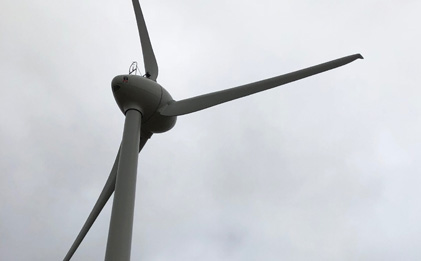Summary
The Aeolius Wind Forecasting Project led by Aeolius Wind Systems Pty Ltd aims to demonstrate two innovative and complementary energy forecasting technologies for use in the National Electricity Market (NEM).
The technology comprises an advanced laser radar (lidar) system, designed to provide a minimum of five minutes notice of changes in the power output of wind turbines, by measuring the wind field up to fifteen kilometres upstream from wind farms.
Evidence of the accuracy of the technology has been demonstrated at a wind farm on the Caribbean Island of Aruba. The ARENA project will further improve forecast accuracy so the technology can be used on sites where turbines are distributed over a large area, or where the line of site to turbines is blocked by hills, trees, and buildings.
The second forecast technology involves the use of wind data collected by the Supervisory Control and Data Acquisition system (SCADA) at individual wind farms. Here the historical trends in wind behaviour are analysed using a neural network and/or linear model to generate the five-minute ahead forecast.
The model based forecaster has been tested at a wind farm in Victoria and found to have significant improvements in accuracy over the equivalent Australian Wind Energy Forecasting System.
Learn more
How the project works
The Aeolius Wind Forecasting Project involves the following activities:
- construction of a long-range scanning Dual Doppler lidar system comprising two lidar units and associated data processing and communication electronics. The output from each lidar will be integrated into a single forecasting system
- validating the predictive skill of the individual lidar units under a range of environmental conditions before installing the fully functional dual Doppler system at Australia’s largest wind farm in Victoria
- refining the data collection and management strategies to extend the forecast timeframe beyond 20 minutes.
- trialing the Neural Model forecast system at multiple wind farms managed by project partner AGL in Victoria and South Australia
- undertaking a cost benefit analysis to clarify the value proposition of the technology to customers in the forecast, greenfield development, and repowering market sectors.
Area of innovation
It is thought that the predictive skill of the lidar forecaster is unmatched by any existing technology, including advanced prognostic and computational models, statistical and machine learning techniques.
Innovation lies in multiple areas including;
- use of custom built, state-of-the-art laser radar technology to achieve the required long range, high spatial resolution wind measurement capability
- development of advanced data post processing software to resolve 3 – dimensional wind vectors over a 300 square km area in near real time
- assimilation of data outputs into a complex computational flow model(s) which allows accurate predictions of wind speed at different locations into the future
- conversion of the predictions into power output estimates at each of the downstream turbine locations.
These tasks are completed in less than five minutes using a proven, environmentally hardened, turn-key product that can be installed and operating at remote locations within one day of delivery to site.
Similarly, the neural and linear network forecasters involve significant technical innovation including the use of advanced computational and predictive software that allows forecasts to be generated without the cost of installing and operating additional hardware at wind farms.
Benefit
The new technologies as a result of the Aeolius Wind Forecasting Project will improve the accuracy of dispatch forecasts by resolving shortfalls with the current methodology, which it is destined to fail at critical times. For example, when there are significant changes in the upstream flow field behaviour (ramp up/ down events, wind shear, and turbulence). The new lidar technology overcomes the flaw by providing “real world” measurements of the energy yield in the upstream flow field at the required spatial and temporal scales.
Similarly, the Neural Network technology will:
- reduce barriers to renewable energy uptake by allowing the power system to incorporate greater capacity of wind generation while staying within stable grid frequency limits
- reduce causer pays payments to wind farm operators when forecasts are inaccurate. These costs have risen sharply during the past five years increasing industry operating cost, which ultimately flow through to electricity prices
- increase skills capacity and knowledge relevant to renewable energy technologies.
Additional impacts
In addition to forecasting, opportunities to reduce costs and improve reliability of power supply can be achieved by:
- reducing the cost and lead-time for new wind farm developments by removing the need to install multiple masts to collect data; reducing reliance on (often) inaccurate numerical modelling; and precision siting of turbines within the landscape to maximise yield
- improving productivity at existing wind farms through better understanding of the local flow field dynamics. For example, the ability to track impacts of turbine wakes on downstream assets offers the potential to improve productivity using appropriate management strategies
- increasing the efficiency of turbines using of Fast Forward Control systems. Here the pitch and yaw of individual turbines can be prepositioned to maximise yield prior to changes in wind speed and direction at each site
- reducing maintenance cost by avoiding damage to turbine blades and gear boxes from gust fronts and turbulence.
The above place downward pressure on electricity prices by allowing the wind farm operator to sell energy into the market under competitive pressure at lower cost than otherwise would have been the case.
The ARENA demonstration provides a vehicle for achieving the above by demonstrating the value proposition to the commercial market in Australia.







